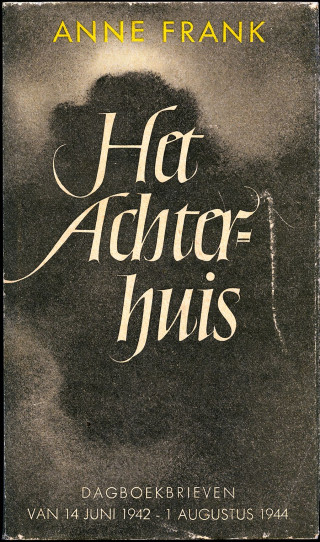The diary is not a genial document, despite its author’s often vividly satiric exposure of what she shrewdly saw as “the comical side of life in hiding.” Its reputation for uplift is, to say it plainly, nonsensical. Anne Frank’s written narrative, moreover, is not the story of Anne Frank, and never has been. That the diary is miraculous, a self-aware work of youthful genius, is not in question. Variety of pace and tone, insightful humor, insupportable suspense, adolescent love pangs and disappointments, sexual curiosity, moments of terror, moments of elation, flights of idealism and prayer and psychological acumen—all these elements of mind and feeling and skill brilliantly enliven its pages. There is, besides, a startlingly precocious comprehension of the progress of the war on all fronts. The survival of the little group in hiding is crucially linked to the timing of the Allied invasion. Overhead the bombers, roaring to their destinations, make the house quake; sometimes the bombs fall terrifyingly close. All in all, the diary is a chronicle of trepidation, turmoil, alarm. Even its report of quieter periods of reading and study express the hush of imprisonment. Meals are boiled lettuce and rotted potatoes; flushing the single toilet is forbidden for ten hours at a time. There is shooting at night. Betrayal and arrest always threaten. Anxiety and immobility rule. It is a story of fear.
But the diary in itself, richly crammed though it is with incident and passion, cannot count as Anne Frank’s story. A story may not be said to be a story if the end is missing. And because the end is missing, the story of Anne Frank in the fifty years since “The Diary of a Young Girl” was first published has been bowdlerized, distorted, transmuted, traduced, reduced; it has been infantilized, Americanized, homogenized, sentimentalized; falsified, kitschified, and, in fact, blatantly and arrogantly denied. Among the falsifiers have been dramatists and directors, translators and litigators, Anne Frank’s own father, and even—or especially—the public, both readers and theatregoers, all over the world. A deeply truth-telling work has been turned into an instrument of partial truth, surrogate truth, or anti-truth. The pure has been made impure—sometimes in the name of the reverse. Almost every hand that has approached the diary with the well-meaning intention of publicizing it has contributed to the subversion of history.
The diary is taken to be a Holocaust document; that is overridingly what it is not. Nearly every edition—and there have been innumerable editions—is emblazoned with words like “a song to life” or “a poignant delight in the infinite human spirit.” Such characterizations rise up in the bitter perfume of mockery. A song to life? The diary is incomplete, truncated, broken off—or, rather, it is completed by Westerbork (the hellish transit camp in Holland from which Dutch Jews were deported), and by Auschwitz, and by the fatal winds of Bergen-Belsen. It is here, and not in the “secret annex,” that the crimes we have come to call the Holocaust were enacted. Our entry into those crimes begins with columns of numbers: the meticulous lists of deportations, in handsome bookkeepers’ handwriting, starkly set down in German “transport books.” From these columns—headed, like goods for export, “Ausgangs-Transporte nach dem Osten” (outgoing shipments to the east)—it is possible to learn that Anne Frank and the others were moved to Auschwitz on the night of September 6, 1944, in a collection of a thousand and nineteen Stücke (or “pieces,” another commodities term). That same night, five hundred and forty-nine persons were gassed, including one from the Frank group (the father of Peter van Daan) and every child under fifteen. Anne, at fifteen, and seventeen-year-old Margot were spared, apparently for labor. The end of October, from the twentieth to the twenty-eighth, saw the gassing of more than six thousand human beings within two hours of their arrival, including a thousand boys eighteen and under. In December, two thousand and ninety-three female prisoners perished, from starvation and exhaustion, in the women’s camp; early in January, Edith Frank expired.

